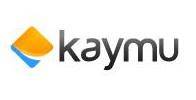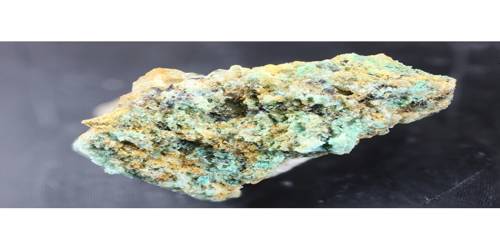Introduction:
U.S steel companies faced several challenges which forced them to change their strategies or adapt new strategies. Some of the challenges are described below:
Overcapacity:
The steel industry of U.S had far more production capacity than was needed to meet market demand. There are many manufacturers compared to small customers, which incur over capacity of the steel industry in 1986, when industry capacity was at 130 million tons, the outlook was for a continued decline in per capita consumption and movement towards capacity in the range of 90 to 100 million tons, so excess capacity was there. There are too many marginal competitors and too much production capacity in U.S steel industry. So it was a big issue for the firm to sustain in the market.
So the U.S government had recently given $1 billion of subsidies to 9 mills, allowing them to remain in operation.
Consumer demand decline:
A slowing economy, particularly in auto sales led the decline of customer demand. Evidence says that decline in motor vehicle production and consumer durable goods hit the producers of flat rolled sheet steel hard. In late 1997 and in 1998, declining demand for steel promoted Nucor and other U.S companies to reduce prices to better compete against an unprecedented surge of imported steel.
Economic recession and terrorist attack:
The economic recession that hit Asia and Europe in the late 1990s, reached the united states in 2000 and 2001 and then orders for steel eroded further after the september11, 2001, terrorist attacks. The slowing economy affected major steel consuming industries such as construction, automobiles and firm equipment. And all those things hampered steel production in the United States.
Dumping steel:
Foreign steel producers with few market opportunities abroad were dumping steel in the U.S market at cut- rate prices. In 1999 commerce department concluded that steel companies in six countries had illegally dumped stainless steel in the United States at prices below production costs or home market prices. Companies in Canada, South Korea and Taiwan were guilty only of dumping, while the government of Belgium, Italy and South Africa also gave their steel producers unfair subsidies effectively to lowered prices.
Price competitiveness:
Due to dumping, the competition of local market increase which lead the price more competitive. Because the local producers at least need to maintain the similar price that foreign firm rated, to survive in the market. So price competition arises. Some U.S firm started to innovate new production process. For example Nucor innovate new production process and other domestic companies had imitated that process and cut their cost and became more price competitive. Since imports had grown to 90% of this market as U.S companies failed to do the things necessary to be competitive on cost and price.
Import pressure:
In U.S there was flexibility to import foreign steel. So the foreign companies easily sell their steel in U.S at low price. but the integrated domestic companies produced wide range of steels using a process that started with iron ore processed in blast furnaces, because of high cost they has difficulty competing with imported steel , usually from Japan and had lost market share due to foreign import. In addition to cheap imports U.S steel producers were facing higher energy prices, weakening demand by customer industries, increasingly tough environmental rules and a changing cost structure among producers.
To solve the import pressure U.S Senate decisively shut off an attempt to restrict imports of foreign steel, despite the complaints of U.S steel companies that a flood of cheap imports was driving them out of business. Again the Bush administration was under mounting pressure to impose 40% import tariffs and quotas that would provide relief for the struggling integrated mills in the U.S.
Raw material cost:
Scrap steel and scrap substitute were the most significant element in the total cost of steel products. The raw material was not easily available; moreover its price was very high. Iverson was becoming increasingly concerned about the adequacy of scrap steel supplies and the potential for higher scrap steel prices. The evidence says that Nucor’s average cost for scrap steel increase to about $120per gross ton used in 2000, up from $111 per gross ton in 1999.
Few returns compared to investment:
The U.S firm invests a lot for their production but the industry was hovering around 75% capacity utilization which is very low level to be profitable for many companies. 25% capacity remains below the level of utilization due to foreign competition. Evidence says that, Nucor continued to press forward with new investments though revenue declines of 3% and earnings declines of 7% in 1999. Sometimes it happened that the output is too small compare to investment.
For example- in 1993 Nucor announced the construction of a steel plant on the island of Trinidad to supply its mill with iron carbide pellets, the innovative plant would cost $60million and take 18 months to complete. In 1994 Nucor moved forward expanding its two existing flat rolled sheet mills and announcing a new $500 million. But later, that expensive plant was deemed unsuccessful and closed. But it caused severe loss because of its high initial investment.
High labor and energy cost:
The steel industries of U.S were facing high labor and energy cost problem in mining and processing iron ore. In 1989 there was labor negotiation at several companies, which lead the labor cost increase. In Darlington plant the workers received a 4% to 6% bonus for every good ton shared per hour for the week over the computed standard which increase the total labor cost.
In 2000, a Nucor employment cost was about 10% of corporate revenues, a very low number compared to labor cost at the mills of rival companies. They maintain low cost by keeping the employee force at the level it should be and by using good technology. However it became clear that the U.S firm mainly the leaner organization still had to implement new technology, cut labor cost, increase reliability, productivity and business process if it wants to maintain profitability and competitiveness.
Lack of technological sophistication:
US steel industry did not use proper technology but it was needed to do so. From the case we found that-Larry kavanaph, American Iron and Steel Institute vice president for manufacturing and technology, said “steel is a very high tech industry, but no body knows it”. If US steel industry use high technology then they would do better. For example Nucor had developed computer programs to prepare designs for customers and to compute bids based on current prices and labor standard. In addition each Viulcraft plant maintained its own engineering department to help customer with design problems and specifications.
Conservative management:
The Wall Steer journal pointed various reason of declining the growth of steel industry and one of the reasons was conservative management of steel industry. Most of the big steel companies follow bureaucratic strategy, which restricts their employees to become innovative and it hampers their productivity. But the companies which follow autonomy, has become successful. Example is Nucor.
Risk of bankruptcy:
In October 2000 and 2001, 29 steel companies in the United States including Bethlehem Steel Corporation and LTV Corporation (the nation’s third and forth largest steel producers) filed for bankruptcy protection. They had that risk because of foreign competitor, the foreign steel firms are able to give up-to-date technology and satisfy customers’ need but U.S firm were not able to do so.
More over, some experts believed that close to half of the U.S steel industry’s production capacity might be forced to close; since 1997 nearly 47000 jobs in the U.S steel industry have vanished. In November 2001 LTV announced that its cash reserves were depleted and that it no longer had the funds to operate all of its facilities; management indicated the company was petitioning the bankruptcy judge to permit the company to shut down operations and put some of its steelmaking facilities up for sale.
Shortage of required capital:
One of the reasons of the growth rate of U.S steel industry decline is the lack of modernization due to shortage of required capital. Evidence says that the unrealistic depreciation schedules, high corporate taxes, excessive regulation and jaw-boning for lower steel prices have make it difficult for the U.S steel industry to borrow and generate the huge quantities of capital required for modernization.
Mergers and joint ventures:
Foreign competitors like Japanese company were involve in joint venture and became a strong competitor of U.S steel industry. Evidence says-two Japanese companies, NKK Corporation and Kawasaki Steel Corporation were in merger and create the world’s second biggest steel maker. Some analyst believed these new mega steel makers could out muscle U.S competitors.
U.S steel company may reduce this competitor if they involve in merger and acquisition or joint venture. But most of the firm of U.S steel industry didn’t do so, except Nucor.
Nucor began a joint venture with Yamato Kogyo LTD, to make structural steel products in an Arkansas mill and it became Nucor’s largest division and the largest producer of wide flange structural steel in the United States.
Primary challenge impacting U.S Minimill producers
The U.S companies which adapt minimill technology particularly face some problems. Such as,
Unsophisticated technology:
The leading U.S minimill companies in 1980 were Nucor, Florida Steel, Georgetown Steel, North Star Steel, and Chaparral Steel. By using minimill technology Nucor expected to have half the labor cost of the integrated manufacturers’ plant and to produce flat rolled sheet at cost $50 to $75 per ton below the costs of integrated manufacturer. But minimill technology was too unsophisticated to manufacture any more than a narrow range of low-value steel products- reinforcing rods, structural bolts, angle iron and fasteners.
Between the late 1970 and 1980 the integrated mills share of total domestic shipment fell from about 90% to about80%and in 1990 it was around 40%.
Twin shell furnace technology:
Some steel industry experts believed that a relatively new technology, the twin shell electric are furnace, would help minimill increase production and lower costs. Twin shell furnace technology increased production capacity by 60% and had been widely adopted in the last few years. However, the accelerating move toward twin shell furnace was expected to greatly tighten the supply of scrap steel, possibly creating shortage and causing scrap steel price to rise.
Low Cost Provider Strategy of nucor
During 1972, with its new formally adopted name, the Nucor Corporation started its journey to join the ranks of the world’s leading steel companies. This is one of the fastest growing steal companies in America and one of the lowest cost producers of steel products in 1990. It has production operations in nine states of U.S which occupies 8000 workers. In spite of the recession in 1991, this company’s revenue has increased from $21 million in 1966 to $ 1.5 billion in 1990. Nucor is famous for its expanding product lines and low prices and the investors are pleased because of its strong earnings and stock price performances.
From these facts it can be assumed that Nucor is following a very strong strategy which made it one of the biggest and best known global producers of steel. The strategy which is followed by Nucor is clearly explained through the statement of Aycock, when he was the Darlington plant manager. He said,
“The key to making a profit when selling a product with no aesthetic value, or a product that you really can’t differentiate from your competitors, is cost.”
From the above comment it can be clearly assumed that, Nucor is following low cost strategy to sell its steel products and make profit out of it. In each and every operation the company is trying to reduce its costs. From procuring the raw material to manufacturing the steel products they give emphasis to reduce their cost.
Low cost strategy targeted towards price-sensitive buyers
Nucor’s buyers are the automakers, appliance manufacturers, construction firms, farm equipment producers and other durable goods producers. They buy their raw material, which is steel, in bulk. For that reason they want to buy the steal in a low price, otherwise they won’t be able to produce their products in cost effective way. So the buyers of Nucor are very price sensitive.
Two options are there through which the companies can make profit from the low cost strategy. These are:
Option 1: Undercut competition through price:
Nucor sell their products in a relatively low price compared to other U.S steel companies. For this reason they are able to defeat the competitors and become the fastest growing steel company. Nucor is producing different type of steels which have low price than other U.S competitors’ products. Nucor has introduced a new pricing strategy. The steel industry has established a pattern of captivating shipping costs, so all users paid the same delivered price regardless of their distance from the mill. This policy ultimately increases the price of the product.
But Nucor stopped the practice of including freight charges in its prices and began pricing its products at the mill. Nucor’s strategy was to quote the same price and sales terms to all customers and the customers pay all shipping charges. In this way customarily Nucor’s price is the lowest or close to lowest in the industry. Because of their lowest price, Nucor can undercut competition.
Option 2: keep market price but maintain higher margin:
As Nucor is able to reduce cost; it can make higher profit margins if Nucor keep the market price for its products.
For example, Nucor produce flat-rolled sheets at costs $50 to $75 per ton below the cost of integrated manufacturers, a highly sufficient cost advantage given the going market price of $400 per ton. So they are earning more revenue because their costs are much lower.
How to achieve cost advantage through low cost strategy
By controlling the cost drivers the companies can achieve cost advantage.
Economies of scale:
In order to distribute the fixed cost among units produced, the manufacturers need to achieve economies of scale. Which means if the manufacturers produce more, the fixed cost will be shared among the units produced and thus reduce the fixed cost.
There are some industries, where the manufacturers need to achieve economies of scale to earn profit. The steel companies have high fixed cost because of their initial investment in establishing a steel plant with all high tech equipments and expensive production process. For example, the first mini mill of Nucor in Crawfordsville, Indiana, to produce flat sheet steel cost them $250 million, the mill in South Carolina cost them $ 500 million.
Not only that, the technology to avoid cost of reheating the billets cost Nucor $12 million. So to balance these high fixed costs and earn profit, they need to sell their products in bulk. And it can be possible by achieving economies of scale, which will enable them to reduce their fixed cost and thus help them to earn more profit
Nucor has plan to construct a 1-million-ton-per-year steel plate mill in Hertford Country , North Carolina, which will push Nucor’s total steel production capacity to over 12 million tons per year. To share the fixed costs and earn profit, this company is producing such a large amount and sells in bulk.
Learning & experience curve effect:
The more one company get experienced the less mistakes it will do, efficiency will increase, and as a result their cost will go down, profitability raise.
But manufacturing steel requires a long time experience because it is a very high tech product. The companies which are old and experienced can produce high quality steel, and it is mandatory to hire the most skilled and efficient workers to produce steel. Nucor’s roots went back to 1955 when they were engaged in auto manufacturing. From that time it continuously upgrades itself by adapting new technology; new production process and thus it become successful in producing high quality steels.
This company always gives emphasis to hire the best workers in the area for any of its steel plants. The managers, directors and CEOs of Nucor had such educational backgrounds which contribute a lot in improving the quality of the products. For example, the general manager of Darlington plant developed a system that involved preheating the ladles, allowing for the faster flow of steel in to the caster and resulting in better control of the steel characteristics. The continuous processing approach in Darlington had saved $10-$12 per ton in fuel usage and losses due to oxidization of the steel. This is why; less time and lower capital investment were required in Darlington than other minimills. Thus, by getting experienced, being effective and taking innovative steps this company is able to reduce its costs and earn revenue.
Cost of key resource inputs:
By reducing the cost of key resource inputs, the companies can reduce their overall cost and earn profit. The steel manufacturer’s key resource inputs are the raw material which is steel, fright cost and the labor cost. By reducing the cost of these things Nucor is able to earn profit.
Buying row material s for their company from other steel suppliers and the importers cost Nucor a lot. To reduce this cost Nucor started to build plants to produce steels. For example, Nucor expanded its steel making business in 1969 to provide low cost steel to its Vulcraft plants. It also builds $25 million plant in Indiana to manufacture steel fasteners in 1986 and many other plants to produce its raw materials. A statement given by Iverson, the past CEO of Nucor clearly states this fact. He said,
“We got into steel business because we wanted to build a mill that could make steel as cheaply as we were buying it from foreign importers or from offshore mills.”
Scrap steel and scrap substitutes were the most significant element in the total cost of steel products at Nucor. The price of the scrap steel is constantly increasing because of its inadequacy, so to reduce the pressure of the scrap steel’s high price Nucor started to produce iron carbide pellets which is a substitute of scrap steel in its Trinidad plant.
Nucor serve as their own general contractor and design and build much of their equipments by themselves. They build their continuous casting unit; reheat furnaces, cooling beds, mill stands. All these cost them $125 per ton of annual capacity which is 10 times lower than projected costs for large integrated mills of $1200-$1500 per ton of annual capacity.
Nucor reduced the cost of another important key resource input which is labor cost by taking different innovative steps. Their total employment cost was less than $60 per ton compared with the average employment costs of the seventh largest U.S companies of close to $130 per ton. Their labor costs were less than 20% of their sales price. Nucor’s employment costs averaged about 10 percent of corporate revenues, a very low number compared to labor costs at the mills of rival companies.
Benefits of vertical integration vs. outsourcing:
The firms can reduce their casts by vertical integration or by out sourcing. Nucor does both of these activities to reduce their cost and earn revenue.
Nucor engaged itself in producing the raw materials and thus perform vertical integration. Nucor produce Scrap steels, which is the main raw material for producing steel products and thus managed to produce their products in low price. The Vulcraft plant of Nucor used to buy 60% of its steel from foreign source, which costs a lot. But in 1968 they started to produce these steels in the Darlington steel mill in South Carolina.
They also produce many equipments and manufacturing processes by them selves instead of hiring engineers or contractors.
This company also reduced some of its cost through outsourcing, which means for particular activities they depend on other suppliers and firms instead of doing itself. Nucor has strong alliance with outside suppliers. Many of their constructions were done by different construction companies. This company used to buy 95 percent of its scrap steel from an independent broker. In 1967 Vulcraft bought about 60 percent of its steel from foreign source to get it economically. While other minimills doing deals to buy plants and sell abroad, Nucor was planning to ship iron from Brazil and process in Trinidad.
Nucor did not have a corporate advertising department, corporate public relation department, corporate legal or environmental department. They prefer to outsource what ever required to be done in these areas.
In this way Nucor was able to reduce its cost and earn profit through vertical integration and out sourcing.
Some other strategies followed by Nucor
In spite of taking the above strategies Nucor has taken some other innovative steps through which they have made profit and become successful.
Product development, innovation and technological sophistication:
Nucor always want to upgrade its technology. For this reason a task force of four Nucor people toured the world to investigate new technological advancement. Nucor was very innovative in steel and joists. Its plants in Norfolk were years ahead in wire rod welding. In 1960’s this plant had one of the fastest computer inventory management system, design engineering programs, design capabilities and it was very sophisticated in purchasing, sales and managing.
Nucor had developed computer programs to prepare designs for customers and to compute bids based on current prices and labor standards.
Each Vulcraft plant maintained its own engineering department to help customers with design problems or specifications.
Because of all this sophisticated technology they could beat the competitors by reducing their cost of production.
Decentralized and autonomous working environment:
Nucor follows the most decentralized management strategy in each of its plants. Management relations at Nucor was very informal, trusting and not bureaucratic. This fact can be revealed through the comment of Joe Rutkowski, manager at Nucor’s Darlington plant. He said,
“We’re not constrained, head quarters doesn’t restrict what I spend. I just have to make my profit contribution at the end of year.”
This working environment motivates the employees to become more responsible and to work more efficiently.
Employee satisfaction:
Nucor always concerned about their employees. They have given several advantages to its employees. They want to be fair with all its employees. They believe in empowerment of employees.
In addition too their base salary the employees were paid weekly production bonus based on their total output. The companies nonunion hourly workers never seen any layoff and earned not only more than the unionized workers of old line steel companies but also more than 85 percent of the people in the states where they worked. Most of the Nucor employees are financially secure. For all these reasons the employees were satisfied and worked efficiently to increase the production of Nucor.
Other cost cuttings:
Nucor constantly trying to reduce its costs in each and every sector. The company doesn’t give its employees any perquisites, country club membership, company cars. Nucor has an incentive based compensation system. Company planes, executive dining rooms or rest rooms, finishing lodges, reserved parking place none are there in Nucor. In these several ways Nucor also reduced their cost.
Recommendation To Nucor
Cost reduction should be sustainable:
One of the pitfalls of low cost strategy is the cost reduction is not sustainable in most of the times. The competitors can easily imitate this strategy and they will be able to take up the market share by following the same strategy. Many of the U.S steel producers started to imitate Nucor’s innovative production process and cut their costs to help them to be more price-competitive. So Nucor need to follow a different strategy to gain competitive advantage.
Follow differentiation strategy:
Nucor has taken many steps to produce innovative products and improve their process development. Nucor has product R&D activities and manufacturing activities, which will help them to follow differentiation strategy. So it will be easy for them to take differentiation strategy and come up with differentiated, high quality product for which the customers will be willing to pay high price. Thus they will be able to come out of the consequence of low cost provider strategy.
Mergers and joint ventures:
Mergers and joint ventures have given success to Nucor. So they can do more mergers and joint ventures to increase their production capacity and reduce the cost of production.
Acquisition of foreign plants:
The home market of steel products is not attractive because of the recession, unstable political conditions and some other problems. So if Nucor acquire plants in foreign countries where there is demand for steel products than they will be able to sell more of their products and earn profit.
Forward integration:
Before forming the Nucor steel company, they were engaged in manufacturing motor cars. So now Nucor can again start up their own car manufacturing company instead of supplying the automakers raw materials. Nucor did not have a corporate advertising department, corporate public relation department or a corporate legal or environmental department. Without outsourcing they can place such departments.
Technological advancement:
Though Nucor use high tech equipments in its plants but in some sectors it needs adoption of new technologies. Nucor can use advanced metallurgical practices, sophisticated process control sensors, state of the art computer controls, and the latest refinements in continuous casting and rolling mill technology.
Fulfilling environmental standards:
Nucor was not that much concerned about environmental consequences which they are causing. Most of the stakeholders are not happy with its environmental practices because some of its plants are polluting the air. So Nucor need to become more environment conscious as the whole world is giving emphasis on environmental protection.
















